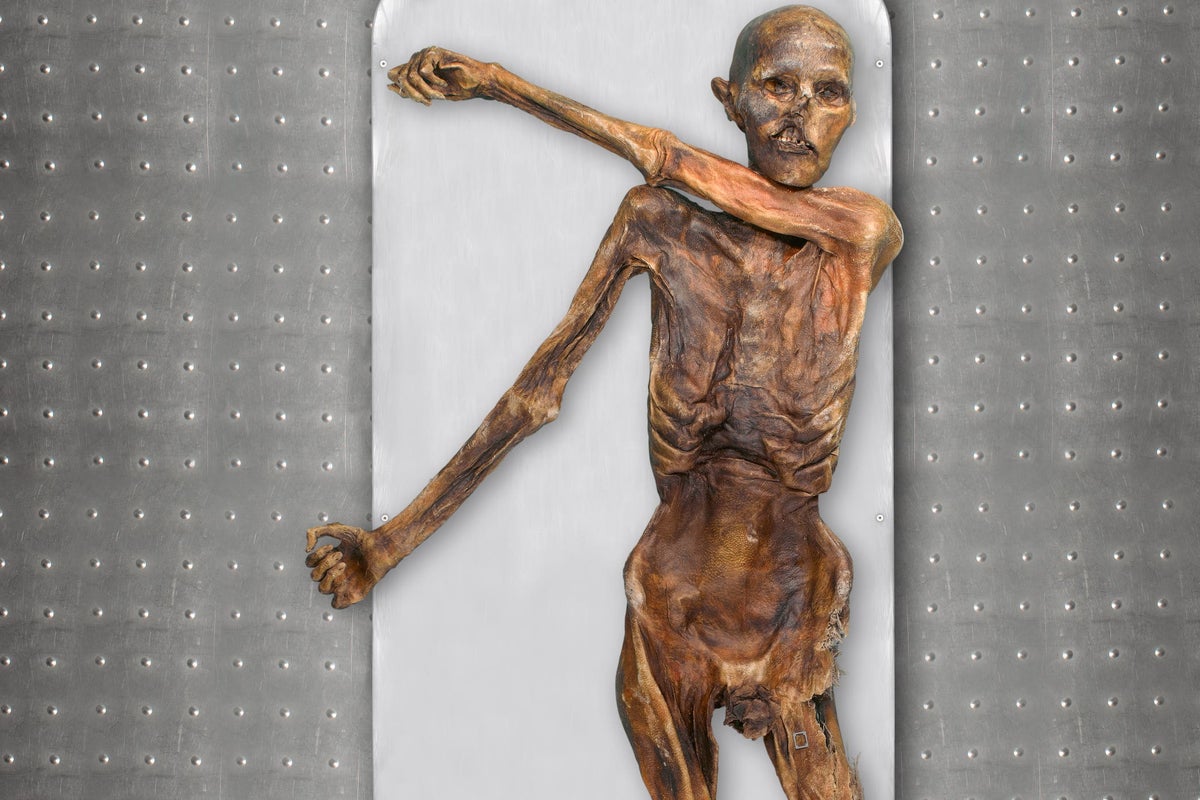
Otzi the 5,300-year-old mummified body – discovered in melting ice in The Alps in 1991 – may have had dark skin, dark eyes and a balding head, analysis suggests.
Initial studies of the corpse, also called the Iceman, revealed genetic traces of eastern European steppe herders from 4,900 years ago.
However the new study no longer supports this finding.
Researchers said technology has advanced since the first study, and many more genomes of other prehistoric Europeans have been fully decoded.
It was previously thought that the mummy's skin had darkened during its preservation in the ice, but presumably what we see now is actually largely Otzi's original skin colour— Albert Zink, Eurac Research Institute for Mummy Studies
This made it possible to compare Otzi’s genetic code with his contemporaries.
Scientists found that among the hundreds of early European people who lived at the same time as Otzi, and whose genomes (full set of DNA) are now available, Iceman has more ancestry in common with early Anatolian farmers than any of his European counterparts.
Johannes Krause, from the Max Planck Institute for Evolutionary Anthropology in Germany, said: “The genome analysis revealed phenotypic traits such as high skin pigmentation, dark eye colour, and male pattern baldness that are in stark contrast to the previous reconstructions that show a light-skinned, light-eyed and quite hairy male.
“The mummy itself, however, is dark and has no hair.”
He noted that while alive, Otzi looked more like the mummy does today than previously thought.
Anthropologist Albert Zink, study co-author and head of the Eurac Research Institute for Mummy Studies in Bolzano, Italy, said: “It’s the darkest skin tone that has been recorded in contemporary European individuals.
“It was previously thought that the mummy’s skin had darkened during its preservation in the ice, but presumably what we see now is actually largely Otzi’s original skin colour.
“Knowing this, of course, is also important for the proper conservation of the mummy.”
Otzi captured global attention in 1991 when he was discovered by hikers 3,210 metres above sea level.
The researchers said the previous image of Otzi is also incorrect regarding his hair.
As a mature man, he most likely no longer had long, thick hair on his head, but at most a sparse crown of hair.
However, according to the study published in Cell Genomics, his genes suggest a predisposition to baldness.
Dr Zink said: “This is a relatively clear result and could also explain why almost no hair was found on the mummy.”
Genes presenting an increased risk of obesity and type 2 diabetes were also found in the Iceman’s genome, but these factors probably did not come into play because of his healthy lifestyle.







